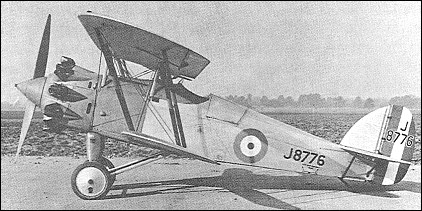|
| Designed by Sydney Camm as a potential successor to
the RAF's ageing Siskin fighter, the Hawfinch was built
to Specification F.9/26, being one of nine contenders for
RAF orders. Flown for the the first time in March 1927,
the Hawfinch was of fabric-skinned metal construction,
with an armament of twin synchronised 7.7mm Vickers guns and powered by a supercharged
nine-cylinder Bristol Jupiter VII radial of 450hp (which
replaced a Jupiter VI shortly after the commencement
of flight testing). Declared a close runner-up to the
Bristol Bulldog, which was selected for RAF service in
1928, the Hawfinch prototype subsequently participated
in various experimental programmes, during one
of which the original two-bay wing cellules gave place
to single-bay cellules, other tests being conducted with
a twin-float undercarriage.
 | A three-view drawing (600 x 419) |
| WEIGHTS |
| Take-off weight | 1320 kg | 2910 lb |
| Empty weight | 873 kg | 1925 lb |
| DIMENSIONS |
| Wingspan | 10.21 m | 34 ft 6 in |
| Length | 7.21 m | 24 ft 8 in |
| Height | 2.84 m | 9 ft 4 in |
| Wing area | 27.31 m2 | 293.96 sq ft |
| PERFORMANCE |
| Max. speed | 275 km/h | 171 mph |
|
Do you have any comments?
|
| 
COMPANY
PROFILE
All the World's Rotorcraft
|







